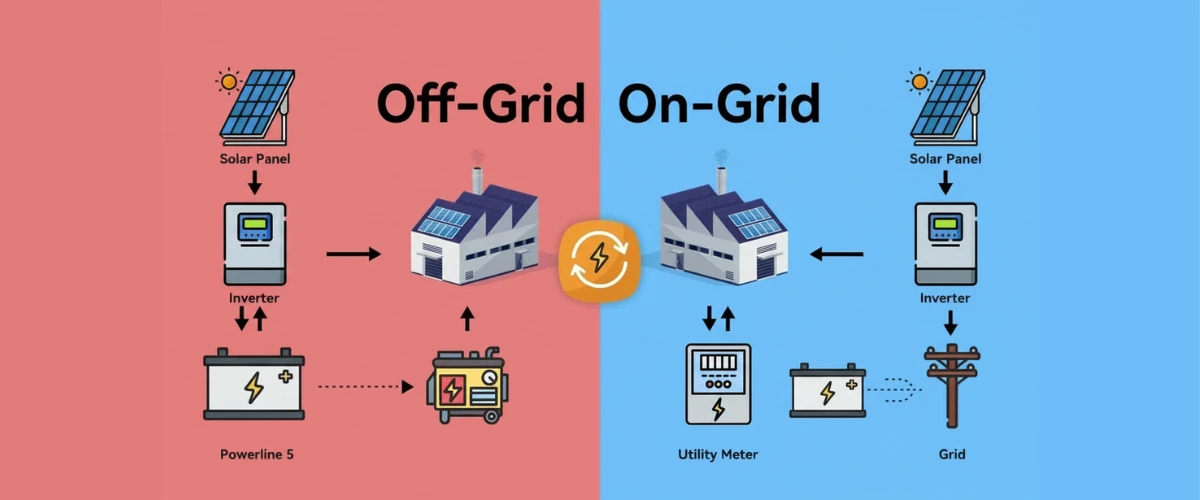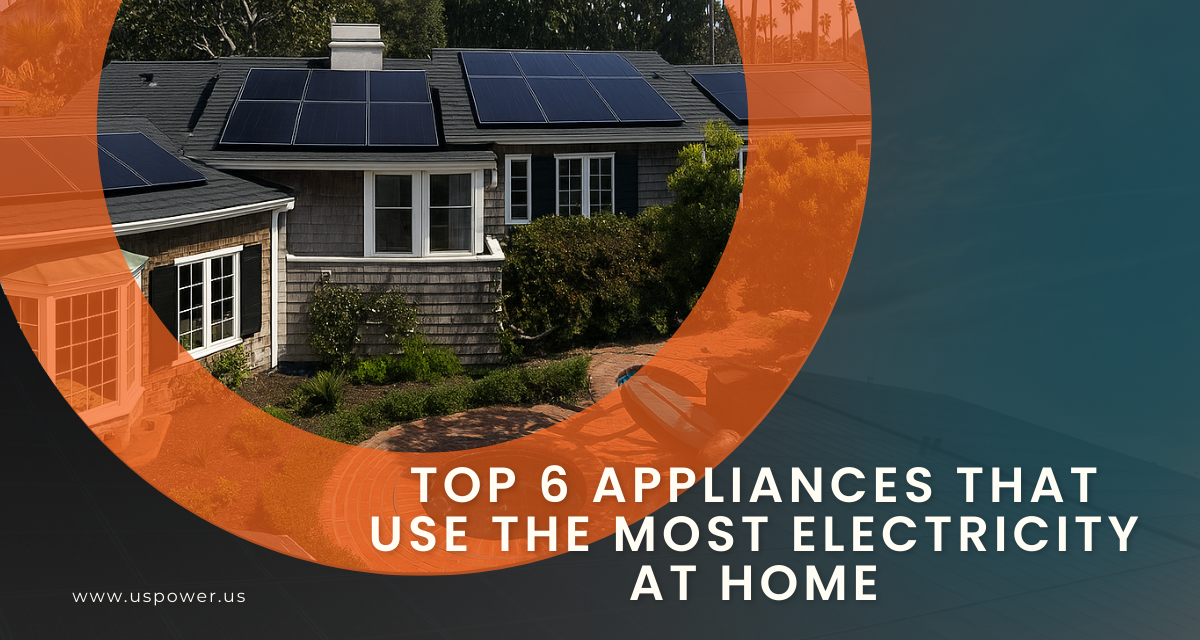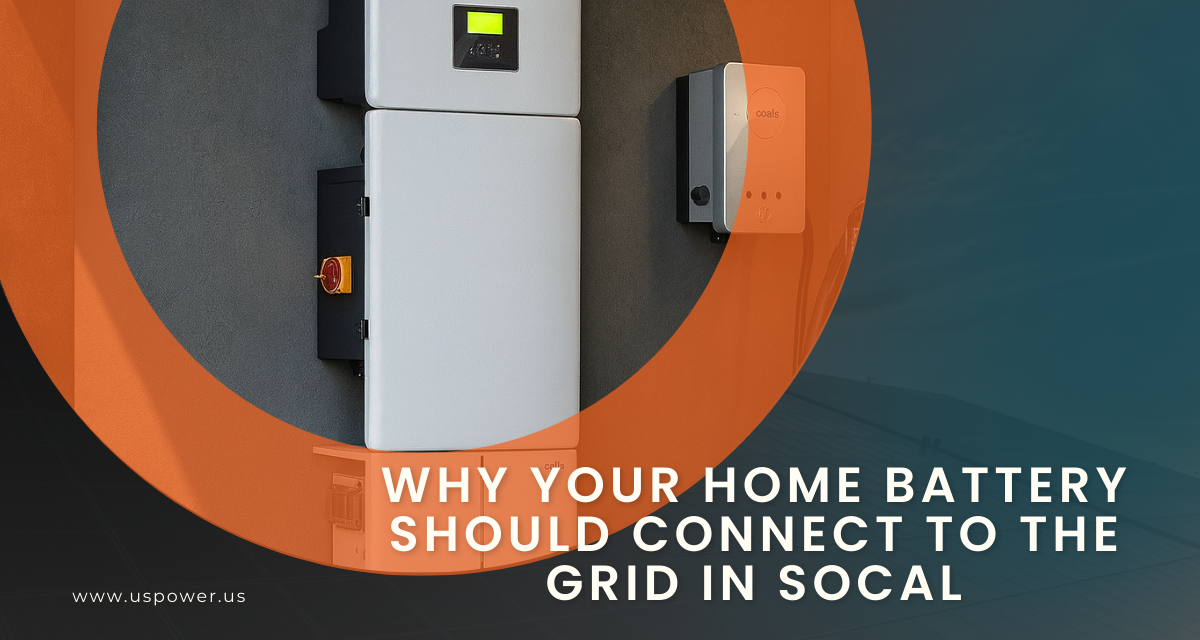Hybrid vs Full Off-Grid Solar: Can You Finally Cut the Grid Cord?

Solar and Roofing Advisor
Battery storage is more affordable than ever, but full off-grid still requires careful planning and investment. batteries are cheaper

Are batteries cheap enough in 2025 to go fully off‑grid?
- As of 2025, typical home solar battery installations in the U.S. cost between US $6,000 and $18,000 before incentives, depending on capacity.
- That translates roughly to US $700–$1,000 per usable kWh installed capacity (after incentives).
- For example, a 10 kWh battery often cited for moderate home backup might cost ~$9,000–$13,000 before incentives, and ~$6,300–$9,100 after the 30% federal tax credit.
- Larger systems (20 kWh or more) are more expensive, but still conceivably in the $16,000–$22,000 range before incentives.
- However, according to one market tracker, as of early 2025, some lithium‑ion battery packs were averaging ~ US $152 per kWh — though this refers only to the battery pack itself, not total installed system cost.
So yes — relative to a decade ago, battery storage is far more affordable. But whether it’s “cheap enough” for full off-grid depends heavily on how much electricity your household uses, how much storage you want, and how much solar generation you can realistically produce.
Off‑grid storage demands are often much larger than typical backup batteries
- Many experts caution that to be truly independent from the grid — especially through cloudy days, shorter winter sunlight, or multi-day outages — you would need far more storage than the 10–20 kWh systems that are common for backup.
- Some analyses suggest that going off‑grid comfortably for a whole home — including during low production times — may require battery capacity that pushes total installed costs into the tens of thousands of dollars.
- Additionally, if you retrofit storage to an existing solar system, you may face extra costs: inverters, wiring/electrical upgrades, labor, permit/inspection fees, possibly panel upgrades, etc.
Bottom line: While battery storage has become far more accessible, full off-grid for a typical Southern California (or Arizona) home — especially with moderate to high electricity usage — still often requires significant investment.
📉 Incentives and rebates can dramatically change the math — at least for now
- For homeowners in states with strong rebate/incentive programs (e.g. Self-Generation Incentive Program / SGIP in California), battery + solar systems can be more affordable. SGIP has historically offered rebates for residential storage installations.
- Pairing federal tax credits (e.g. 30% investment tax credit) with state/utility incentives can significantly reduce out‑of‑pocket costs, making storage and hybrid systems more appealing.
But incentive availability depends on your location — and such incentives may not always apply (especially for off-grid setups, or outside zone‑eligible regions).
Real‑world practicality: Is full off‑grid realistic for most homeowners?
Pros: Great backup, partial independence, resilience
- A hybrid solar + battery system gives backup power during outages — useful during grid disruptions, wildfires, or emergencies.
- For homeowners focused on resilience and self-sufficiency, storage can offset a significant portion of grid dependence even if true 100% off-grid isn’t feasible.
- Even if you stay grid‑tied, batteries help time‑shift solar energy (store during the day, use at night), which can reduce reliance on the grid and lower utility bills under time-of-use (TOU) or demand‑rate plans.
Cons: Cost, variability, unpredictability, and practicality limits
- Full off-grid requires large storage capacity — which adds cost, and may still leave you vulnerable to extended cloudy periods or high power usage.
- System size becomes much larger (both solar array and battery) than a typical grid‑tied setup — meaning higher upfront cost, more space required (roof space or ground‑mounted panels + battery enclosure), and possibly more maintenance.
- For many homeowners, the “grid‑assist hybrid” model (solar + battery + grid connection) tends to offer the better cost‑benefit balance rather than full off-grid
In short: while 2025 battery/storage economics make the dream of off‑grid more plausible than before — for many homes, full off‑grid remains a big investment.
What About Permits or Legal/Regulatory Hurdles?
- In states like California, pairing batteries with solar must comply with building, fire, and electrical codes (e.g. those regulated by California Energy Commission / CEC plus local and fire codes).
- Even with correct equipment (PV modules, inverters, batteries listed under certified equipment lists), you typically need permits and inspections when installing solar + battery or energy storage systems.
- For new single-family homes in California, the 2025 Energy Code may require solar PV (with certain exceptions) — or at least that homes be “solar‑ready.”.
- When it comes to completely disconnecting from the utility grid (going off-grid), the regulatory picture gets more complex: local building/fire/electrical codes may restrict or impose extra requirements for stand-alone battery systems — especially if they involve large battery banks.
- In some jurisdictions, staying connected (hybrid/grid-tied) may be simpler, safer, and more code-compliant than a full grid disconnect — partly because battery + PV is often regulated separately under codes.
For a state like Arizona, while I don’t have a recent AZ‑specific statewide ban on off-grid solar + battery, it's highly likely you’ll need permits, code compliance, and possibly inspections to ensure electrical and fire safety. Many local municipalities regulate stand-alone systems under electrical/building/fire codes.
Therefore: before planning a full off-grid system, you should check with your local county/city building department and utility regulations to confirm what's allowed.
So, is battery storage “cheap enough” — and is going off‑grid realistic today?
For many homeowners: “Mostly, but not quite.”
- Battery storage has become far more affordable than even a few years ago.
- A hybrid solar + battery + grid system offers a compelling balance of resilience, savings, and flexibility — and in many cases provides nearly all the benefits of off-grid without the drawbacks.
- Full off-grid remains pricey if you want to cover all loads reliably (especially through bad weather or multi-day outages).
- Incentives and rebates can tip the balance — but may not cover everything, and depend on your location.
- Regulatory/permit and safety requirements add complexity when going completely off-grid.
For most homeowners in places like Southern California or Arizona — especially those who still want reliability and flexibility — a hybrid grid‑assisted solar + battery system tends to offer the best return on investment and practicality for 2025.
For Homeowners Considering Going Off‑grid (or nearly off‑grid)
| Step / Recommendation | Why It Matters |
|---|---|
| Start with a realistic energy audit (kWh usage/day, seasonal variation) | Determines how large your battery + solar system must be to have a chance at off-grid. |
| Plan for more than just “sunny day” conditions — include cloudy days, winter, buffer capacity | Prevents surprise outages or insufficient backup when solar production dips. |
| Consider hybrid (grid + solar + battery) rather than pure off-grid | Provides resilience while avoiding over-investment and code complications. |
| Check local building/electrical/fire codes & permit requirements | Avoids legal headaches, ensures safety, and ensures battery/storage system is code-compliant. |
| Maximize incentives (federal tax credits, state/utility rebates) if available/td> | Reduces upfront cost, making storage and hybrid systems more economically viable. |
| Use quality components (solar panels, battery chemistry, inverter, safety-rated equipment) | Ensures reliability, longevity, and compliance with codes. |
A Balanced View for 2025 Homeowners
Battery storage has come a long way. For 2025, solar + battery is far more affordable, practical, and attractive than in earlier years. For many homeowners, a hybrid solar + battery + grid system offers the most realistic and cost‑effective path to reducing utility dependency — giving strong resilience, lower bills, and backup power — without the complexity and high cost of a full off-grid build.
That said, if you are committed to going fully off-grid — and you’re willing to size your solar and battery system generously, invest, and comply with local permitting and safety codes — it's technically feasible. But it remains a significant investment.
Ready to explore your solar + battery options?
Schedule you free consultation today to see how a hybrid system can maximize savings and backup power for your home in 2025.
Related Articles
Our Related Blogs
A simple guide to buying the right solar panels for Southern California homes.
Identify home appliances that consume the most power and reduce usage smartly.
Grid-connected solar batteries offer backup, savings, and support under NEM 3.0.
Our Solar and Roof Brand Partners








We empower communities and businesses to harness clean, renewable solar energy solutions that drive sustainable growth.
Ready to Own Your Power? Call us today!
818-650-8010
Copyright © 2025 US Power - Axia by QCells. All Rights Reserved.
Privacy is important to us, so you have the option of disabling certain types of storage that may not be necessary for the basic functioning of the website. Blocking categories may impact your experience on the website.
Essential
These items are required to enable basic website functionality.
Personalization
These items allow the website to remember choices you make (such as your user name, language, or the region you are in) and provide enhanced, more personal features.
Marketing
These items are used to deliver advertising that is more relevant to you and your interests.
Analytics
These items help the website operator understand how its website performs, how visitors interact with the site, and whether there may be technical issues.
We and our third-party partners use cookies and other technologies to enhance and track your experience on this site, conduct analytics, and personalize marketing to you. By using the site, you agree to our use of these technologies, including recording and monitoring your interactions with the site.
Get an instant solar estimate using satellite!









